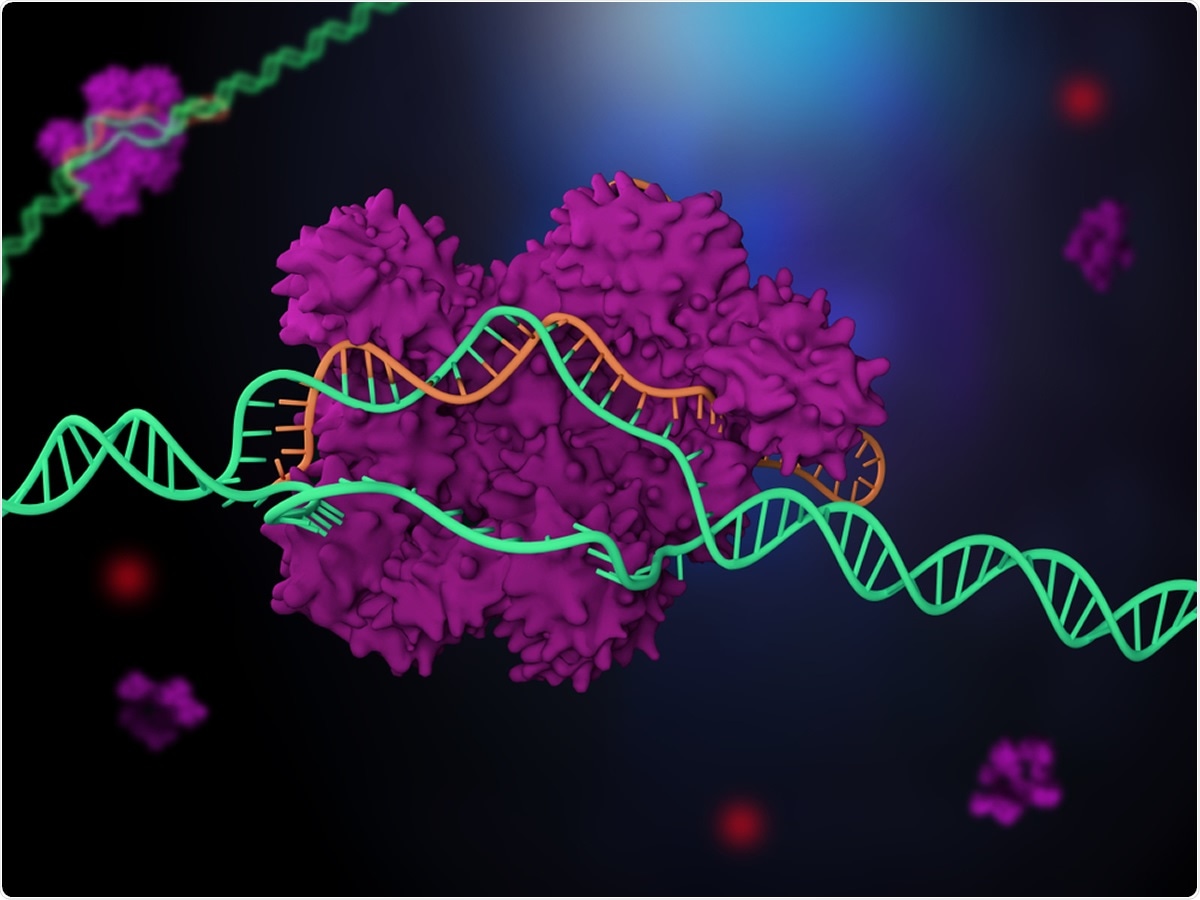In a methodologically trailblazing paper published in the journal Nature Genetics, a team of Belgian scientists uncovered an assembly of coronavirus host factors that may be exploited to develop drugs against the severe acute respiratory syndrome coronavirus 2 (SARS-CoV-2), but also potentially forthcoming zoonotic coronaviruses.
The coronavirus disease 2019 (COVID-19) pandemic, caused by SARS-CoV-2, has resulted in a global health and economic crisis; however, while vaccines are now being used around the world, only a handful of effective drugs are currently available to treat patients with the disease.
Albeit remdesivir was initially viewed as a promising candidate for severe COVID-19 cases, trials conducted by the World Health Organization (WHO) showed that actually it does not have a significant impact on mortality. On the other hand, dexamethasone was shown to reduce mortality by a third in those critically ill, primarily by suppressing the hyperactive immune response.
Still, dexamethasone benefits only severe cases with a relatively limited effect. Thus novel, safe and efficient treatment options are urgently needed. In that regard, the development of broad-spectrum drugs against coronaviruses would help not only in addressing the current pandemic but may also be used to swiftly contain potential zoonotic events in the future.
But in order to develop such drugs, a complete understanding of host factors that are used by coronaviruses to infect a cell is essential, as each step of the viral replication cycle may serve as an intervention target. Although the entry step of coronaviruses has been described in ample detail, the particulars on host–virus interaction in later parts of the viral life cycle are still elusive.
Consequently, a research group from Belgium (led by Dr. Jim Baggen from the Rega Institute in Leuven) utilized genome-wide CRISPR (clustered regularly interspaced short palindromic repeats)-based genetic screens in order to discern exact host factors that are required for SARS-CoV-2 and human coronavirus 229E (HCoV-229E) infection.

A CRISPR-based genome-wide knockout screen
In this study, the aforementioned CRISPR-based genome-wide knockout screen was performed in the human Huh7 cell line (derived from male hepatoma tissue) without the introduction of an exogenous receptor since the SARS-CoV-2 strain used in the study prompted the development of an evident cytopathic effect in these cells.
Furthermore, screens were performed with both SARS-CoV-2 and much less pathogenic HCoV-229E that is endemic and causes the common cold. This, in turn, enabled the identification of not only host factors specific for SARS-CoV-2 and HCoV-229E, but also for HCoV-OC43 and coronaviruses.
To validate the obtained findings, the researchers have expressed single guide RNA targeting the identified genes and the known receptor genes in Huh7 cells. As a result, they could see whether the ablation of those genes affected the sensitivity of cells to cytopathic effect induced by either SARS-CoV-2 or HCoV-229E.
Common host factors for human coronaviruses
This study has unveiled phosphoinositide 3-kinase (PI3K) type 3 as a common host factor for SARS-CoV-2, HCoV-229E and HCoV-OC43, which means that small molecules that target this protein might be broadly applicable as anti-coronavirus inhibitors.
Moreover, the screens have demonstrated that lysosomal protein TMEM106B actually serves as a key host factor that enables SARS-CoV-2 infection in primary lung cells and liver-derived human cell lines. In patients with COVID-19, single-cell RNA-sequencing of airway cells has shown that the expression of TMEM106B correlates with SARS-CoV-2 infection.
The researchers have also shown that TMEM41B – a novel regulator of autophagy (intracellular degradation system) and lipid mobilization – is needed for HCoV-229E infection, and to a lesser degree for SARS-CoV-2 infection.
Informing future research endeavors
In short, this methodologically robust research study exposed a plethora of coronavirus host factors that may be used in the development of drugs against SARS-CoV-2 infection, but also zoonotic coronavirus outbreaks that may arise in the future.
“The set of essential coronavirus host factors identified in our genome-wide screens will form a basis for studies unraveling the cellular pathways hijacked by these viruses”, say study authors. “In addition, these factors can serve as targets for medicinal chemistry efforts to counter the current COVID-19 pandemic or future outbreaks of pathogenic coronaviruses”, they add.
It is now clear that pathogenic coronaviruses tend to periodically emerge, which means that they will continue to pose a global public health threat beyond the current COVID-19 pandemic. As a result, conducting fundamental research studies (akin to this one) aimed at developing broad anti-coronavirus inhibitors will be an indispensable step forward.
- WHO Solidarity Trial Consortium (2020). Repurposed antiviral drugs for Covid-19—interim WHO solidarity trial results. New England Journal of Medicine. https://doi.org/10.1056/NEJMoa2023184
- Baggen, J. et al. (2021). Genome-wide CRISPR screening identifies TMEM106B as a proviral host factor for SARS-CoV-2. Nature Genetics. https://doi.org/10.1038/s41588-021-00805-2
Posted in: Medical Science News | Medical Research News | Disease/Infection News
Tags: Autophagy, Cell, Cell Line, Cold, Common Cold, Coronavirus, Coronavirus Disease COVID-19, CRISPR, Dexamethasone, Drugs, Genes, Genetic, Genetics, Genome, Immune Response, Intracellular, Kinase, Knockout, Liver, Medicinal Chemistry, Mortality, Palindromic Repeats, Pandemic, Protein, Public Health, Receptor, Remdesivir, Research, Respiratory, RNA, SARS, SARS-CoV-2, Severe Acute Respiratory, Severe Acute Respiratory Syndrome, Syndrome, Virus

Written by
Dr. Tomislav Meštrović
Dr. Tomislav Meštrović is a medical doctor (MD) with a Ph.D. in biomedical and health sciences, specialist in the field of clinical microbiology, and an Assistant Professor at Croatia's youngest university – University North. In addition to his interest in clinical, research and lecturing activities, his immense passion for medical writing and scientific communication goes back to his student days. He enjoys contributing back to the community. In his spare time, Tomislav is a movie buff and an avid traveler.
Source: Read Full Article
